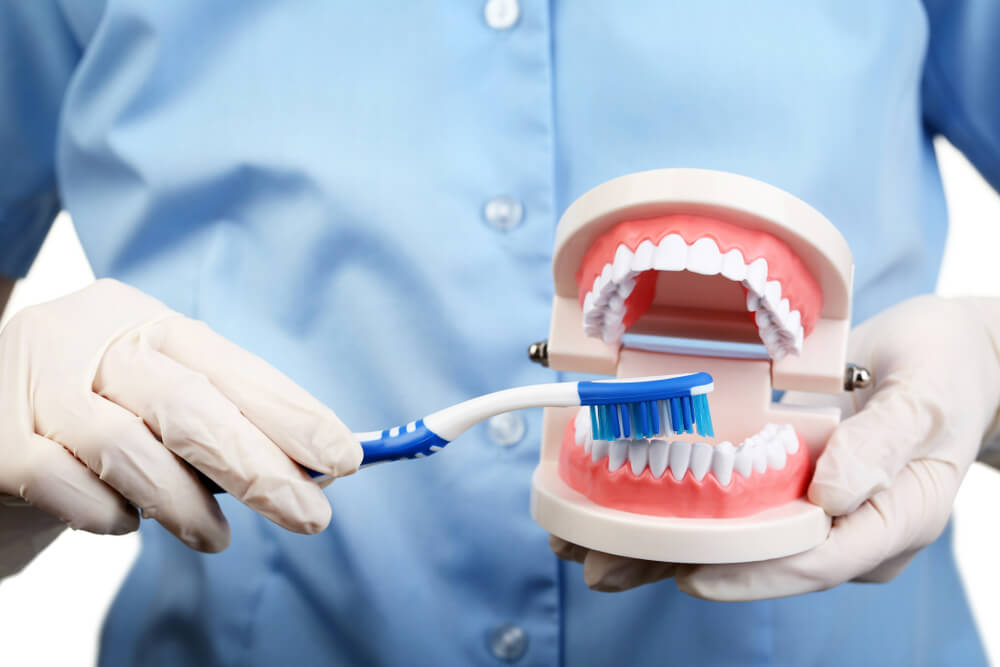When it comes to maintaining good oral hygiene, choosing the right toothbrush and toothpaste is crucial. The variety of options available can make the decision seem overwhelming, but understanding your specific needs can help you make an informed choice. Whether you’re looking to prevent cavities, fight gum disease, or whiten your teeth, selecting the right products will set the foundation for a healthy smile. In this blog, we’ll guide you through the process of choosing the perfect toothbrush and toothpaste for your dental health needs.
Why Choosing the Right Toothbrush Matters
Your toothbrush is an essential tool for removing plaque and food particles from your teeth. However, not all toothbrushes are created equal. The wrong type of toothbrush can lead to ineffective cleaning or even damage to your teeth and gums. Let’s break down the different factors to consider when choosing the right toothbrush.
1. Bristle Type: Soft, Medium, or Hard?
One of the most important aspects to consider when choosing a toothbrush is the bristle type. Most dentists recommend using a toothbrush with soft bristles, as they are effective in cleaning your teeth without causing damage to your enamel or gums. Medium and hard bristles can sometimes be too abrasive, leading to gum recession or tooth sensitivity.
- Soft Bristles: Ideal for most people, soft bristles provide gentle yet thorough cleaning, reducing the risk of damaging your gums or enamel.
- Medium Bristles: These are suitable for people with tougher teeth or those who need slightly more scrubbing power. However, they can be harsh on the gums.
- Hard Bristles: Not recommended for daily use, as they can wear down enamel and cause gum irritation.
2. Toothbrush Head Size
The size of the toothbrush head is another important factor to consider. A toothbrush head that’s too large may be difficult to maneuver in smaller areas of your mouth, such as the back teeth. On the other hand, a head that’s too small may not cover enough surface area during brushing.
- Small Heads: Best for people with smaller mouths or those who find it hard to reach their back teeth.
- Medium/Standard Heads: These are typically suitable for most adults and offer a good balance of coverage and control.
3. Manual or Electric Toothbrush?
The decision between a manual and an electric toothbrush often depends on personal preference, but electric toothbrushes offer several advantages. They tend to provide more consistent brushing action, making it easier to achieve a thorough clean. Electric toothbrushes are especially beneficial for individuals with limited dexterity, such as those with arthritis.
- Manual Toothbrushes: Affordable and effective when used correctly, manual brushes are a popular option for those who want a simple and low-maintenance choice.
- Electric Toothbrushes: Great for those seeking advanced features such as pressure sensors, timers, and various brushing modes. They often lead to better plaque removal and may help improve brushing habits.
Choosing the Right Toothpaste for Your Needs
Once you’ve selected the right toothbrush, the next step is choosing the toothpaste that complements it. Toothpaste not only helps clean your teeth, but it also offers additional benefits based on your specific dental health goals. Here’s how to choose the right toothpaste based on your needs:
1. Fluoride or Fluoride-Free?
Fluoride is a natural mineral that strengthens tooth enamel and prevents cavities. Most dentists recommend using fluoride toothpaste, as it significantly reduces the risk of tooth decay.
- Fluoride Toothpaste: The most common and effective choice for cavity prevention. It strengthens enamel and can help reverse early signs of tooth decay.
- Fluoride-Free Toothpaste: Some people prefer fluoride-free toothpaste, often due to concerns about fluoride toxicity or sensitivity. However, fluoride-free options may not offer the same level of cavity protection.
2. Toothpaste for Sensitive Teeth
If you suffer from tooth sensitivity, choosing a toothpaste specifically designed for sensitive teeth is essential. These kinds of toothpaste contain compounds that block the pathways to your nerves, reducing sensitivity to hot, cold, or sweet stimuli.
- Desensitizing Toothpaste: Contains ingredients like potassium nitrate or strontium chloride to help block pain signals from sensitive teeth.
- Whitening Toothpaste: Be cautious with whitening toothpaste if you have sensitive teeth, as the abrasiveness can sometimes worsen sensitivity.
3. Whitening Toothpaste
For those looking to brighten their smile, whitening toothpaste can help remove surface stains caused by coffee, tea, and smoking. However, it’s important to note that whitening toothpaste is best used as a supplement to professional whitening treatments, as it doesn’t change the natural color of your teeth.
- Stain Removal: Whitening toothpaste uses mild abrasives to polish the teeth and remove superficial stains.
- Professional Whitening: If you’re seeking a more dramatic whitening effect, professional treatments or over-the-counter whitening gels may be more effective.
4. Natural Toothpaste
Natural toothpaste options often use plant-based ingredients like aloe vera, tea tree oil, and charcoal to promote oral health. These alternatives may appeal to those looking to avoid synthetic chemicals or artificial additives.
- Herbal Toothpaste: This contains natural ingredients such as neem, mint, and clove, which are known for their antibacterial properties.
- Charcoal Toothpaste: Claims to absorb plaque and toxins. However, it can be abrasive, so use it with caution.
5. Gum Care Toothpaste
For individuals dealing with gum issues such as gingivitis or gum disease, a toothpaste formulated for gum care can help prevent further irritation and inflammation.
- Antibacterial Toothpaste: Contains active ingredients like triclosan or stannous fluoride to combat gum disease by reducing bacteria in the mouth.
- Gingivitis Treatment: Toothpaste designed specifically for gingivitis can help reduce bleeding gums and inflammation.
Additional Considerations When Choosing Oral Care Products
1. ADA Seal of Approval
Look for the American Dental Association (ADA) seal of approval on toothpaste and toothbrushes. This ensures that the product has met rigorous standards for safety and effectiveness. Products with this seal are a reliable choice for most oral health needs.
2. Personal Preference
Ultimately, the best toothbrush and toothpaste for you will depend on your personal preferences. Consider factors such as flavor, texture, and ease of use. While it’s important to choose products that suit your oral health needs, the most effective option is the one that you’ll use consistently.
Conclusion
Choosing the right toothbrush and toothpaste is essential for maintaining optimal oral health. By understanding your specific needs—whether you’re dealing with sensitive teeth, seeking a brighter smile, or protecting your gums—you can make informed choices that support your long-term dental well-being.
If you’re unsure which products are best for you, don’t hesitate to consult with your dentist. At DF Aesthetics, we’re here to help guide you on your journey to better oral hygiene and a healthier smile.
Ready to take the next step in your oral care routine? Contact us today at our website DF Asthetics to schedule a consultation or learn more about the best oral care products for your unique needs.


